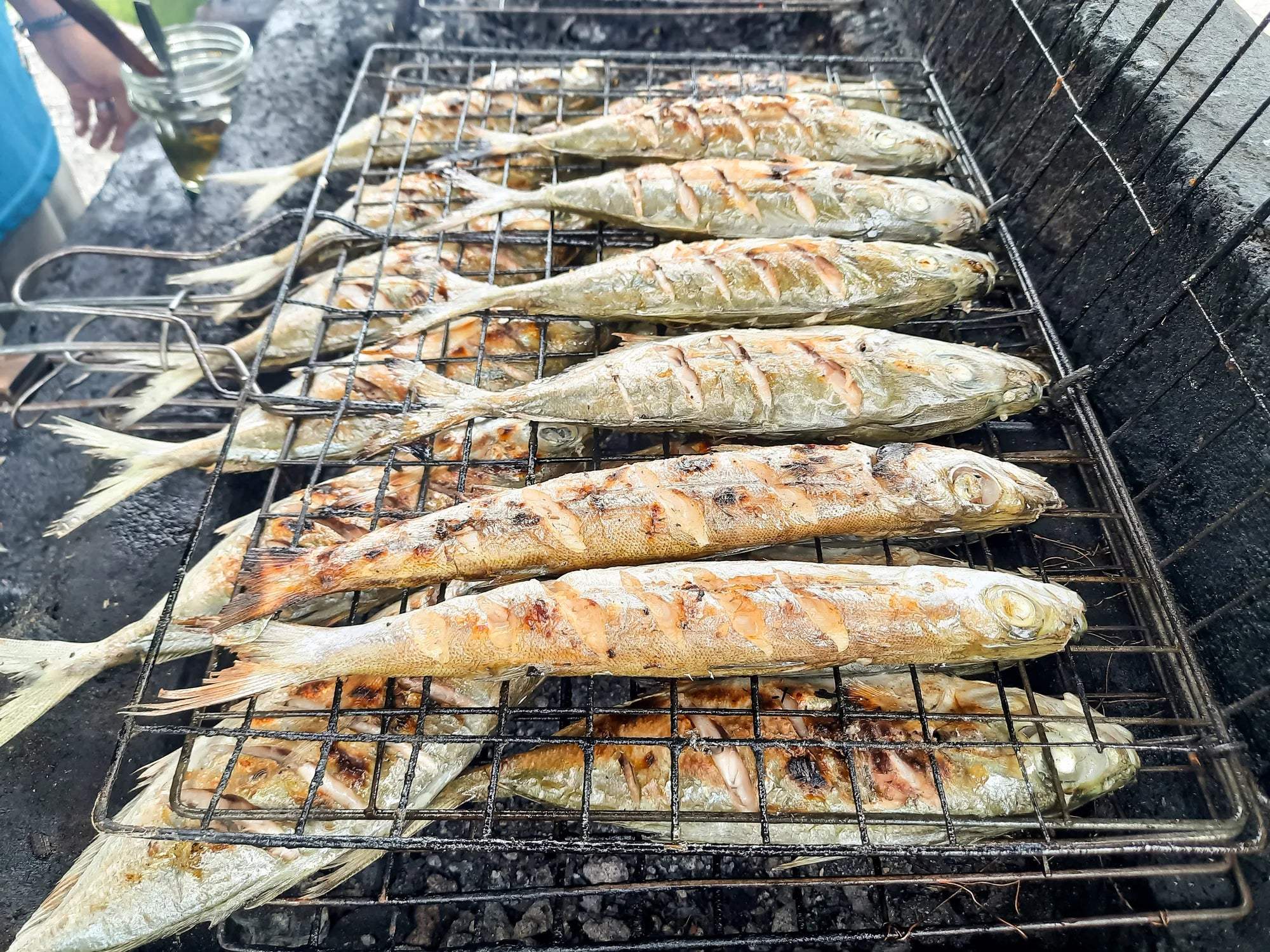
How to Choose the Right Seafood for Outdoor Cooking
Understanding the Basics of Outdoor Seafood Cooking
Outdoor cooking is a beloved tradition that brings people together, and seafood is an excellent choice for these occasions. Its versatility, quick cooking times, and ability to absorb flavors make it a standout option for grilling, smoking, or steaming. However, seafood requires special attention to ensure it’s prepared safely and deliciously. Unlike meats like beef or chicken, seafood is more delicate and can easily overcook or dry out if not handled properly.
Freshness is paramount when it comes to seafood. The natural flavors of fish and shellfish shine brightest when they’re fresh, and this is especially important for outdoor cooking, where the simplicity of preparation often highlights the quality of the ingredients. Additionally, the cooking method you choose—whether it’s grilling over an open flame, smoking for a rich, deep flavor, or steaming in foil packets—can significantly impact the final taste and texture of the seafood. Understanding these basics will set the foundation for a successful outdoor seafood feast.
Factors to Consider When Selecting Seafood
Choosing the right seafood for outdoor cooking involves more than just picking what looks good at the market. Several factors, including sustainability, seasonality, and the type of seafood that suits your cooking method, should guide your decision.
Freshness and Quality
Freshness is the cornerstone of great seafood. When selecting fish or shellfish, start by using your senses. Fresh seafood should have a clean, ocean-like smell—anything overly fishy or sour is a red flag. For fish fillets, look for firm, translucent flesh that bounces back when pressed lightly. Whole fish should have clear, bright eyes and shiny, metallic skin. Shellfish like shrimp and scallops should feel firm to the touch, while live options like clams or mussels should have tightly closed shells or close when tapped.
If you’re buying frozen seafood, ensure it’s well-packaged with no signs of freezer burn or ice crystals, which can indicate poor storage. Frozen seafood can be just as good as fresh if it’s been properly handled, making it a convenient option for outdoor cooking.
Sustainability and Ethical Choices
Sustainability is an increasingly important consideration when choosing seafood. Overfishing and harmful fishing practices have put many species at risk, so it’s crucial to make informed choices. Look for certifications like the Marine Stewardship Council (MSC) or Aquaculture Stewardship Council (ASC) labels, which indicate that the seafood has been responsibly sourced.
Seasonality also plays a role in sustainability. Opting for seafood that’s in season not only supports healthier ecosystems but also ensures you’re getting the freshest catch. For example, wild salmon is typically in season during the summer months, making it a perfect choice for outdoor grilling. Local seafood is another excellent option, as it reduces the carbon footprint associated with transportation and supports local fisheries.
Best Types of Seafood for Outdoor Cooking
Not all seafood is created equal when it comes to outdoor cooking. Some types are better suited for grilling, smoking, or steaming due to their texture and flavor profiles. Here are the top options to consider.
Firm Fish for Grilling
Firm fish like salmon, tuna, and swordfish are ideal for grilling because they hold their shape well and don’t flake apart easily. These types of fish also absorb marinades beautifully, allowing you to experiment with a variety of flavors. For instance, a simple marinade of olive oil, lemon juice, garlic, and fresh herbs can elevate a salmon fillet, while a soy-ginger glaze pairs wonderfully with tuna steaks.
When grilling firm fish, use a clean, well-oiled grill to prevent sticking. Cooking over medium-high heat ensures you get those coveted grill marks without overcooking the fish.
Shellfish for Smoking or Skewers
Shellfish like shrimp, scallops, and lobster are versatile options for outdoor cooking. Shrimp and scallops are particularly well-suited for skewers, making them easy to handle on the grill. They cook quickly and can be seasoned with a variety of spices or marinades. Lobster, on the other hand, is a luxurious choice that can be smoked for a rich, buttery flavor.
When smoking shellfish, use wood chips like apple or cherry for a mild, sweet flavor that complements the natural sweetness of the seafood. Be mindful of cooking times, as shellfish can become rubbery if overcooked.
Whole Fish for Open Flame Cooking
Cooking whole fish over an open flame is a show-stopping way to prepare seafood outdoors. Options like snapper, trout, or branzino are perfect for this method. The skin acts as a natural barrier, keeping the flesh moist and flavorful while it cooks. Stuffing the cavity with aromatics like lemon slices, fresh herbs, and garlic enhances the flavor even further.
To cook whole fish over an open flame, use a grill basket or wrap the fish in foil to make flipping easier. This method not only delivers incredible flavor but also creates a visually stunning centerpiece for your outdoor meal.
Pairing Seafood with Outdoor Cooking Techniques
The cooking method you choose can make or break your seafood dish. Matching the right technique to the type of seafood ensures the best results.
Grilling Tips for Seafood
Grilling is one of the most popular methods for outdoor seafood cooking, but it requires some finesse. To prevent sticking, always preheat your grill and oil the grates. For delicate fish, consider using a fish basket or grilling on a cedar plank to add a subtle smoky flavor.
Timing is crucial when grilling seafood. Most fish fillets only need about 3-5 minutes per side, depending on thickness. Shellfish like shrimp cook even faster, often in just 2-3 minutes per side. Keep a close eye on your seafood to avoid overcooking.
Smoking Seafood for Rich Flavor
Smoking is an excellent way to infuse seafood with deep, complex flavors. Fish like salmon, mackerel, and trout are particularly well-suited for smoking due to their higher fat content, which absorbs smoke beautifully. Use wood chips like hickory or alder for a robust flavor, or opt for fruit woods like apple for a milder taste.
Smoking requires patience, as it’s a slower cooking method. However, the results are well worth the wait, delivering tender, flavorful seafood that’s perfect for outdoor gatherings.
Steaming and Foil Packets for Delicate Seafood
For more delicate seafood like flounder or sole, steaming or cooking in foil packets is the way to go. These methods preserve the fish’s natural moisture and delicate texture. Simply season the fish with herbs, spices, and a splash of white wine or lemon juice, then seal it in a foil packet. Place the packet on the grill or over an open flame, and let it cook for 10-15 minutes.
This technique is also great for adding vegetables to the mix, creating a complete meal in one packet.
Seasoning and Marinades for Outdoor Seafood Cooking
The right seasoning or marinade can elevate your seafood to new heights, enhancing its natural flavors without overpowering them.
Simple Seasoning Ideas
Sometimes, less is more when it comes to seafood. A sprinkle of sea salt, freshly ground black pepper, and a drizzle of olive oil can be all you need to let the natural flavors shine. Fresh herbs like dill, parsley, or cilantro add a burst of freshness, while citrus zest or juice provides a bright, tangy contrast.
Marinades for Bold Flavor
For those who prefer bolder flavors, marinades are a fantastic option. A classic teriyaki marinade made with soy sauce, ginger, garlic, and honey works beautifully with salmon or tuna. For a Mediterranean twist, try a mixture of olive oil, lemon juice, oregano, and garlic. Always marinate seafood in the refrigerator and avoid over-marinating, as the acid in the marinade can break down the fish’s texture.
Safety Tips for Outdoor Seafood Cooking
Cooking seafood outdoors comes with its own set of safety considerations. Following these tips will ensure your meal is both delicious and safe to eat.
Proper Cooking Temperatures
Seafood should be cooked to an internal temperature of 145°F to ensure it’s safe to eat. Use a food thermometer to check the temperature, especially for thicker cuts of fish or whole fish. Shellfish like shrimp and scallops are done when they turn opaque and firm.
Avoiding Cross-Contamination
Preventing cross-contamination is crucial when handling raw seafood. Use separate cutting boards and utensils for raw and cooked seafood, and wash your hands thoroughly after handling raw fish or shellfish. Keep seafood chilled until it’s ready to cook, especially if you’re outdoors in warm weather.
Serving and Pairing Suggestions
The final step in your outdoor seafood cooking journey is serving your dish with complementary sides and beverages.
Side Dishes for Seafood
Grilled vegetables like asparagus, zucchini, or bell peppers are excellent accompaniments to seafood. Light, refreshing salads with citrus or vinaigrette dressings also pair well. For a heartier option, consider rice pilaf or couscous with fresh herbs.
Beverage Pairings
The right beverage can enhance the flavors of your seafood dish. White wines like Sauvignon Blanc or Chardonnay are classic choices, while light beers or citrusy IPAs work well for casual gatherings. For non-alcoholic options, consider sparkling water with a splash of lemon or lime.


